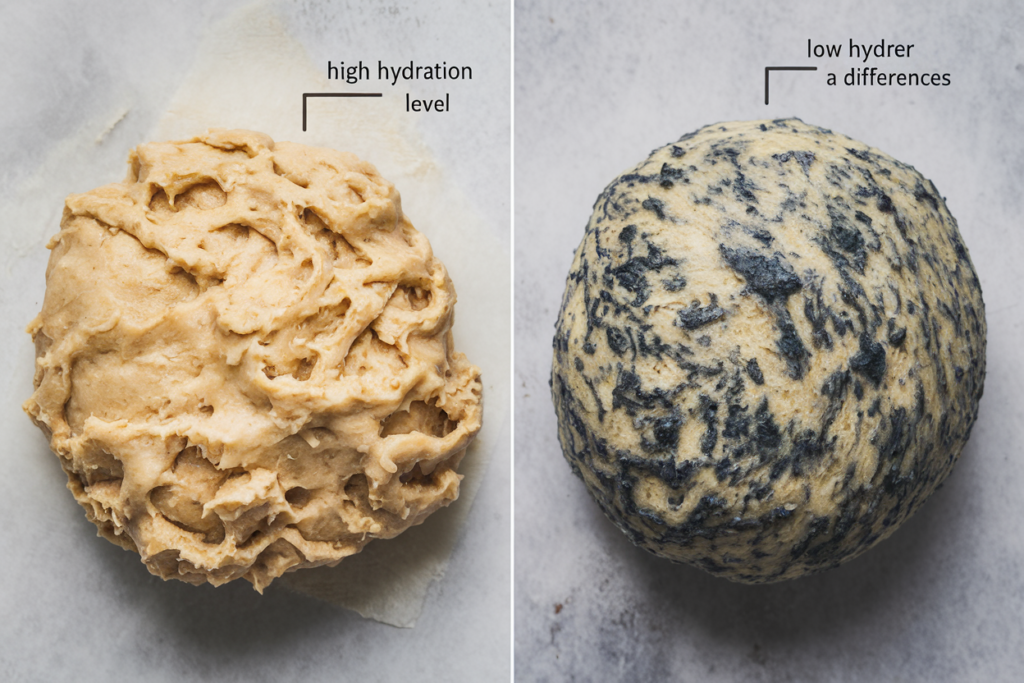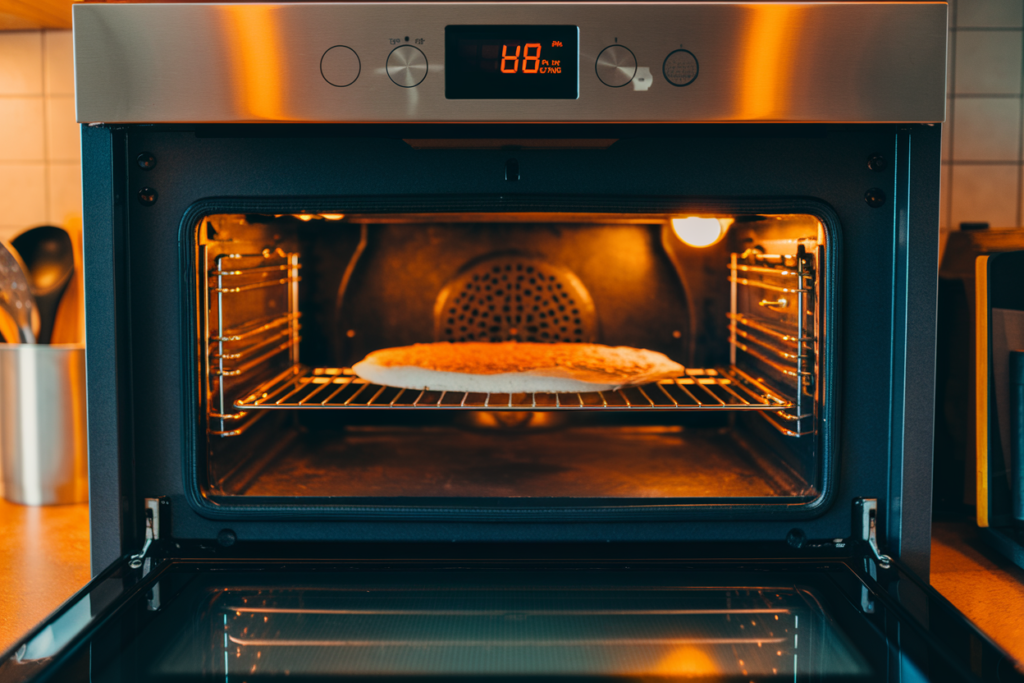Pizza lovers around the world agree that there’s nothing quite like biting into a slice with a perfectly crispy crust. Whether you’re making pizza at home or refining your skills as an amateur pizzaiolo, understanding what is the secret to a crispy pizza crust can elevate your pizza-making game to the next level. In this comprehensive guide, we’ll explore the essential factors that contribute to achieving that sought-after crispy texture, from the right ingredients to baking techniques and troubleshooting common issues.
The Role of Flour Types in Pizza Crust Texture
All-Purpose vs. Bread Flour vs. Semolina Flour: Which One Should You Use?
When it comes to making a pizza crust, the type of flour you choose can significantly impact the texture. All-purpose flour is a common choice for its versatility, but it may not provide the optimal level of crispiness. Bread flour, with its higher protein content, can help create a chewier crust with more structure, leading to a better overall crisp. On the other hand, semolina flour is often used in combination with other flours to add a unique texture and flavor that enhances crispiness. Additionally, the secret to achieving a perfectly crispy pizza crust lies in the right balance of flour types, proper dough hydration, and baking techniques. Using a pizza stone or steel, preheating your oven to a high temperature, and allowing the dough to rest and rise adequately all contribute to that desired crispy finish.
Importance of Gluten Development
The gluten development process plays a crucial role in creating a crust with the perfect balance of chewiness and crispiness. Gluten is the protein that gives dough its elasticity and structure, and proper gluten development can make or break your crust. To achieve the right gluten structure, you’ll need to knead the dough adequately and allow it to rest and ferment properly.
For more insights on gluten and its role in baking, check out our comprehensive guide on artisan breads.
Hydration Levels and Their Impact on Crispiness

High Hydration Dough: How It Influences Texture
One of the key secrets to achieving a crispy pizza crust is managing the dough’s hydration levels. What is the secret to a crispy pizza crust? A high-hydration dough, typically around 65-70%, allows for better oven spring, resulting in a crust that is light and airy with a crispy exterior. However, too much hydration can lead to a soggy crust, so it’s crucial to strike the right balance. Another important factor is the baking temperature. Baking the pizza at a high temperature, ideally 475-500°F (245-260°C), ensures that the crust cooks quickly and develops a crispy texture. Additionally, using a pizza stone or steel can help achieve a uniformly crispy crust by providing even heat distribution.
Balancing Hydration for the Perfect Crust
The goal is to have enough hydration to develop a flavorful and airy crust without compromising on crispiness. Experimenting with hydration levels and observing the dough’s behavior during baking is key to mastering this aspect.
To further refine your hydration techniques, explore our guide to optimizing dough hydration.
The Secret Ingredients for a Crispy Crust
Using Olive Oil: A Game-Changer for Texture
Incorporating olive oil into your pizza dough can significantly enhance the crispiness of the crust. Olive oil helps create a barrier on the surface of the dough, preventing excess moisture from penetrating and softening the crust. Additionally, it contributes to a rich, golden-brown color and adds a subtle flavor that complements the overall pizza experience.
Adding Sugar or Honey: Enhancing Caramelization
A small amount of sugar or honey in the dough can aid in the caramelization process during baking. This not only contributes to the crust’s color but also enhances its crispiness by creating a slightly crunchy layer on the surface. The secret to a crispy pizza crust lies in this simple addition, as it helps develop that perfect golden-brown, crispy texture that everyone loves. What is the secret to a crispy pizza crust? It’s this addition that makes all the difference.
Semolina and Cornmeal: The Final Touch for Texture
Dusting your pizza peel with semolina or cornmeal before transferring the dough to the oven can prevent sticking and add an extra layer of crunch to the crust. The coarse texture of these ingredients helps create that signature crispy bottom that pizza lovers crave.
Kneading and Fermentation Techniques
Kneading Tips: Developing the Perfect Gluten Structure
To ensure a crispy pizza crust, proper kneading is essential for developing gluten, which affects the crust’s texture. Over-kneading can lead to a tough crust, while under-kneading may result in a dough that lacks structure. Aim for a smooth, elastic dough that holds its shape when stretched. Additionally, using a pizza stone or a preheated baking sheet can help achieve a crispy bottom. Properly preheating your oven to a high temperature, typically 475°F to 500°F, is also crucial for a well-cooked, crispy crust.
Cold Fermentation: Unlocking Deeper Flavors and Texture
Cold fermentation, or allowing the dough to rise slowly in the refrigerator over 24-72 hours, can greatly enhance the flavor and texture of your pizza crust. This method allows the dough to develop a complex flavor profile while also improving its ability to crisp up during baking.
Resting the Dough: Why It Matters
Resting the dough after kneading allows the gluten to relax, making it easier to shape and preventing the dough from shrinking back during baking. This step is crucial for achieving a consistent and even crust.
Prepping the Oven for a Crispy Crust

Importance of High Heat: Setting the Stage for Crispiness
The temperature of your oven plays a critical role in determining the crispiness of your pizza crust. For optimal results, preheat your oven to its highest setting, usually around 500°F (260°C), for at least 30 minutes before baking. This ensures that the oven is thoroughly heated, allowing the crust to crisp up quickly without overcooking the toppings.
Pizza Stones vs. Pizza Steel: Which is Better?
When it comes to achieving a crispy crust, the surface on which you bake your pizza is just as important as the dough itself. Pizza stones and pizza steels are two popular options, each with its advantages. Pizza stones are made of ceramic or cordierite and excel at retaining heat, providing even cooking for a crispy crust. Pizza steels, on the other hand, conduct heat more efficiently, leading to an even crispier result.
For more details on the benefits of each option, read our comparison guide on pizza stones and steels.
Baking Time and Temperature: Achieving the Ideal Crisp
The baking time and temperature can vary depending on your oven and the thickness of your crust. As a general rule, bake your pizza for 8-12 minutes, checking for a golden-brown crust and bubbling toppings. If you’re using a pizza stone or steel, the baking time may be slightly shorter.
Baking Methods for Maximum Crispiness
Direct Baking on a Stone or Steel: How to Achieve Even Cooking
Baking your pizza directly on a hot stone or steel helps to achieve even cooking, resulting in a crispy bottom and evenly cooked toppings. This method ensures that the crust is exposed to the maximum amount of heat, creating that signature crisp.
Par-Baking: A Technique for Extra Crispiness
For those who prefer an extra-crispy crust, par-baking is an excellent technique. This involves partially baking the crust before adding toppings, allowing the crust to firm up and develop a crisp exterior. Once the crust is par-baked, you can add your toppings and finish baking until the cheese is melted and bubbly.
Air Bubbles: How to Handle Them During Baking
Air bubbles are a common occurrence in pizza dough and can cause uneven baking if left unchecked. To prevent large air bubbles from forming, use a fork to poke small holes in the dough before baking. If bubbles form during baking, simply pop them with a fork or knife to ensure even cooking.
Building the Pizza: Topping Considerations
Go Easy on the Sauce: Avoiding a Soggy Crust
One of the most common mistakes in pizza-making is using too much sauce, which can prevent the crust from crisping up. A thin, even layer of sauce is all you need to achieve the right balance of flavor and texture.
Cheese Placement and Quantity: Getting It Just Right
The type and amount of cheese you use can also affect the crispiness of your crust. Mozzarella is a classic choice, but be mindful not to overdo it. A generous layer of cheese can insulate the crust, preventing it from crisping up properly. For a more even melt, consider using a blend of cheeses, and be sure to distribute them evenly across the pizza.
Avoiding Soggy Toppings: Tips for High-Moisture Ingredients
Certain toppings, like tomatoes and mushrooms, contain a lot of moisture, which can lead to a soggy crust. To avoid this, try pre-cooking these ingredients before adding them to your pizza. You can also pat them dry with a paper towel to remove excess moisture.
For additional tips on avoiding soggy crusts, check out our guide on handling high-moisture toppings.
Advanced Tips for Achieving the Perfect Crispy Crust
Experimenting with Dough Thickness: Finding Your Sweet Spot
What is the secret to a crispy pizza crust? The thickness of your pizza dough plays a crucial role in determining the final texture of your crust. A thinner dough will generally yield a crispier crust, while a thicker dough will be more chewy. Experiment with different thicknesses to find the one that best suits your taste.
Edge Treatments: Techniques for a Crispy Rim
To achieve a crispy rim, consider brushing the edges of your dough with olive oil or garlic butter before baking. This not only adds flavor but also helps the edges to brown and crisp up.
Final Touches: Adding Oil or Garlic Butter After Baking
For an extra layer of flavor and crunch, brush your pizza crust with a light coating of olive oil or garlic butter immediately after it comes out of the oven. What is the secret to a crispy pizza crust? This simple step can elevate the taste and texture of your pizza.
FAQs: Common Questions About Crispy Pizza Crust
Why Is My Pizza Crust Not Crispy?
- Common mistakes include using too much sauce, overloading your pizza with heavy toppings, or not preheating your oven properly. Additionally, using the wrong type of flour or failing to knead the dough sufficiently can also result in a less crispy crust. For more details, refer to our section on troubleshooting crust issues.
How Can I Make My Pizza Crust Crispier?
- To make your pizza crust crispier, try increasing the oven temperature, using a pizza stone or steel, and ensuring your dough is well-hydrated but not overly wet. Par-baking the crust before adding toppings can also help, as well as brushing the edges with olive oil before baking.
Does Olive Oil Make Pizza Dough Crispy?
- Yes, olive oil can contribute to a crispy pizza crust. By brushing olive oil on the dough before baking, you create a barrier that helps prevent moisture from softening the crust. Additionally, olive oil helps the crust brown more evenly, adding to its crispiness.
Why Does My Pizza Crust Get Soggy?
- A soggy pizza crust is often the result of too much moisture, whether from the sauce, cheese, or toppings. To prevent this, use a thin layer of sauce, drain or pre-cook high-moisture toppings, and avoid overloading the pizza with ingredients.
Should I Pre-Bake My Pizza Crust?
- Pre-baking, or par-baking, your pizza crust can help achieve a crispier texture, especially if you’re using a lot of toppings or sauce. This technique allows the crust to firm up before the toppings are added, ensuring it doesn’t become soggy during the final bake.
What Temperature Is Best for a Crispy Pizza Crust?
- For a crispy pizza crust, bake at the highest temperature your oven allows, typically around 500°F (260°C). Preheating your oven thoroughly is essential to achieve that perfect crispiness.
Conclusion
Achieving the perfect crispy pizza crust requires attention to detail, from choosing the right ingredients to mastering baking techniques. By understanding the role of flour types, hydration levels, and oven temperature, you can create a pizza crust that is light, airy, and irresistibly crispy every time. Whether you’re a home cook or aspiring pizzaiolo, these tips and tricks will help you unlock the secret to pizza perfection.
For more pizza-making tips and to explore a variety of recipes, visit our Pizza Resource Page. And don’t forget to experiment with your dough and techniques to find what works best for you. Happy baking!
Related Articles:
- Artisan Bread Baking: Understanding Dough Hydration
- Pizza Stones vs. Pizza Steel: Which One Should You Use?
- Top 5 Mistakes in Homemade Pizza Making
If you have any more questions or want to share your pizza-making success stories, feel free to leave a comment below or join our community of pizza enthusiasts on social media. Happy pizza making! ???? #erinrecipes #crispycrust #pizzaperfection

